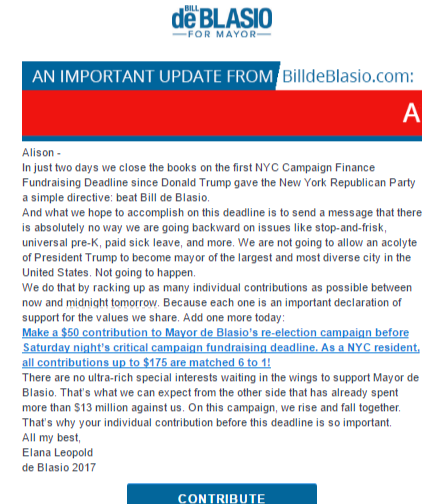Special Thanks to Intern Sarah Reddan for heroic work these past two weeks.
In the Issue:
Part 1:
- Save the Dates
- Brooklyn Forum on Privatizing Public Space
- Kate Wood’s Illustrated History of Upper West Side Neighborhood activism
- Queens March Against Gentrification
- Reconsidering Context: An Illustrated Talk by Steven Semes, author of the Future of the Past
- The French Do It Better
- Another Way to Save Mom & Pop Shops
- Architects Get Into A Lather over Midtown Rezoning => Eyesore of the Month?
- Plutocracy and the Rockefellers: What the Times Got Right & Wrong
- Landmarks Commission Ignores Community Input (dog bites man?)
- Revolving Door: City Officials & Real Estate Jobs
Part 2:
- Sal Albanese’s interview on campaign finance reform
- Glass Eyesore of the Week
- A Cynic’s Take on the Masterwork’s Awards of MAS
- Are Business Improvement Districts Good for Democracy?
- Does Anyone without a Vested Interest Actually Like the Midtown Rezoning Proposal?
Part 3:
- Berlin’s Anti-Gentrification Policy Measures We Could Try
- Quote of the Week and Why Preet Should Run for City Office
- Women Activists & Adaptive Reuse of Great Buildings
- London Skyline Now & Then (Images)
- The Mayor’s Weird Call for Contributions

Cartoon from The New Yorker
Save the Dates
- Forum on the Sell Off Of Public Assets
Saturday, April 8th 2:30-5:00 PM, First Unitarian Congregational Society Chapel, 116 Pierrepont Street
Are you concerned about the loss of public spaces or what is often referred to as the public commons or public realm? Learn how selling off public assets connects to growing inequality in New York City. Join us in our fourth public discussion sponsored by First Unitarian Congregational Society Weaving the Fabric of Diversity, and Citizens Defending Libraries. This year our featured speakers include activists and community leaders Lynn Ellsworth founder of Human-scale NYC and Alicia Boyd founder of MTOPP, The Movement to Protect the People, and Tom Angotti, Professor of Urban Affairs and Planning at Hunter College and the Graduate Center, City University of New York, and Director of the Hunter College Center for Community Planning & Development (CCPD). Free, open to the public, Contact Carolyn McIntyre, cemac62@aol.com, 917-757-6542
-
How the West was Won: Preserving Manhattan’s “City of the Future”
An illustrated talk by LandmarkWest! President Kate Wood, Wednesday, April 19, 8:00pm
The National Arts Club*
15 Gramercy Park South
Complimentary, RSVP is required. Call LW! at 212-496-8110 to reserve.
- Queens march Against Gentrification, April 20th 6 p.m., 47th and Queens Boulevard. Sponsored by the Queens Anti-Gentrification Project, Queens Neighborhoods United, and many others. March against the Brooklyn Queends Connection, LIC Core Rezoning, and the Sunnyside Yards Project. Support a city-wide rent freeze, an end to upzoning, and a fully funded NYCHA.
-
‘Reconsidering Context: New Buildings in Old New York, an illustrated talk by Steven Semes, author of “The Future of the Past” and Director of the MA Program in Preservation at the University of Notre Dame. Thursday, May 18th at First Church of Christ Scientist, Central Park West and 68th Street, 6:30 p.m., Free and Open to the Public. Co-sponsored by Humanscale NYC, Tribeca Trust, Landmarks West!, Historic Districts Council, the Institute for Classical Art and Architecture, and the Preservation League of New York State (list in formation) More details to follow.
The French Do It Better – meaning urbanism
Paris now has 7.5% of its apartments are now empty, that’s over 107,000 units. This is not due to population loss, but to real estate speculation, which is “creating artificial shortages in the world’s most sought after cities”. Holding 7.5% of apartments off the market surely inflates housing prices.
In 2015 Paris tried to avoid an ’empty apartment tax’ by taxing vacant apartments at 20% of its fair market value. In 2016, that tax was increased to 60% with hopes of discouraging speculation and absentee ownership.
This vacancy issue is a problem in many cities. In New York City there were 319,000 vacant privately owned apartments in 2015, triple the number of vacant units in Paris. We think NYC should follow Paris’s lead on this one.

See the full article by Better Dwelling here.
Another Way to Save Mom & Pop Shops
Commercial Rent Tax – known as CTR – is applied to businesses paying more than $250k in rent annually. Such businesses pay an extra 3.9% tax to the city. Created in the 1960s, the tax was mostly phased out in the 1990s except for businesses below 96th Street in Manhattan. It was left in some areas due to the amount of money the City was generating from it.
Many say that this tax is costly and causes smaller shops to close. There is a new legislation proposed that would change the tax to businesses paying more than $500k a year in rent.
NYC Councilman Dan Garodnick says this tax on rent is bizarre and businesses already pay a real estate tax. He says that the tax is forcing out small businesses and restaurants and driving Manhattan to become more of a mall of chain stores. He hopes that changing the policy to exclude those paying less than $500k in rent would help those businesses. Garodnick says the mayor has not given his take on the situation.
Watch the video of the interview with Garodnick here. Sounds like a good idea, but why not also pass the Small Business Jobs Survival Act, which qualified lawyers have repeatedly asserted is fully constitutional (it’s only the Real Estate Board’s lawyers who say otherwise and they are not exactly objective, right?).
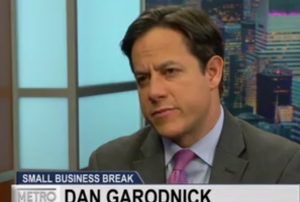
Architects Get into a Lather Already Over the Midtown Rezoning => Eyesore of the Week
Architectural firm Oiio Studio came up with the design shown below. It is for two towers on 57th Street in Manhattan that connect at the top, thus the name “silly straw” in am New York‘s article featured here. The plan would demolish a 77-floor condo and a seven-story pre-war building that currently exists on the two plots of land. This is publicity hounded and opportunism at its worst. The Midtown rezoning hasn’t even happened yet.
We also think this is one of the most ridiculous building ideas we have seen. It is also additional proof that architects – as a profession (despite the many exceptions known to us as allies here in NYC) – cannot be trusted to manage cities in the public good. Mostly they destroy the past and self-aggrandize. After all, that is what the modernist manifestos told them to do, and modernist architects always obey their leaders, do they not?
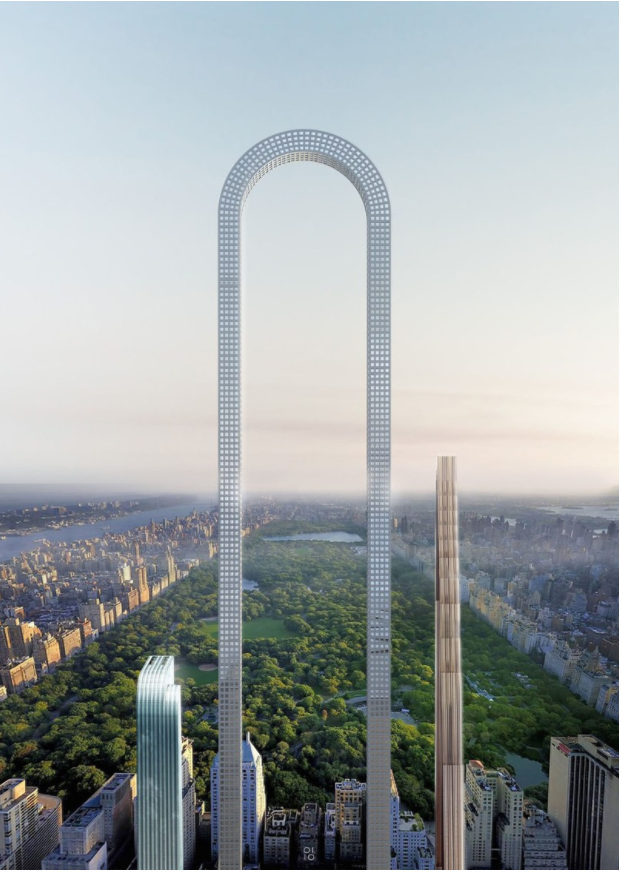

David Rockefeller: What David Dunlap Got Right & Wrong
Senior journalist David Dunlap of The New York Times wrote “What David Rockefeller Wanted Built Got Built”, which you can read here. We wanted to highlight what Dunlop got right vs. wrong about the importance of Rockefeller’s work.

Orwellian Renaming of Long Island College Hospital
Cobble Hill’s Long Island College Hospital (LICH) has been debated for a decade. In 2015, the hospital site was purchased by developer Fortis Property Group for $240 million and has battled with the community over the plans. In late 2016, the developer revealed plans for the site, which we now learn will be called ‘River Park’.
River Park will have 3 buildings, a few townhouses, and a condo tower. Three other sites the developer owns in Brooklyn will also be turned into condos in what NY Curbed refers to as a ‘megaproject’. We just call it overscaled and a tragedy for the two neighboring historic districts. Read the full article here.

LPC Ignores Community Input
Read the full article here by DNA Info.
The Chelsea community fought to keep the oldest house in the Chelsea Historic District from turning into a mega-mansion, but the project was approved by NYC Landmarks Preservation Commission (LPC). The house at 404 W. 20th Street was built in the 1800s. Even though Community Board 4 wrote letters to LPC and their concerns were included in an Environmental Impact Statement, the community feels that they were ignored when the project was greenlighted.
Preservationists are wary of opening up LPC for reform. They fear that real estate groups will jump in and change the LPC for their own benefit, as they have been doing anyway via lobbying and forcing legislation through the limp City Council. However, the Community Board 4 will reach out to other community boards in Manhattan to discuss issues with the LPC. They suggest LPC needs more transparency and accountability. We could not agree more.

Parlor of the house that will be gutted for a megamansion. Source: DNA Info
Revolving Door: City Officials & Real Estate Jobs

We all know there is a revolving door between elected officials and big real estate private sector jobs. This ‘door’ can lead to corruption and unfairness in decisions made about our city’s built environment. Our city urgently needs to modify the city’s campaign finance law to put tighter limits of the revolving doors.
Mark Weprin, former Deputy Secretary of Legislative Affairs for Governor Cuomo, NYC Council Member, and NYS Assemblyman, has joined the firm of Greenberg Traurig who ‘helps clients navigate government’.
Reform, people, reform!
Sal Albanese’s Interview on Campaign Finance Reform
Sal Albanese is a former Bay Ridge councilman and a mayoral candidate for 2017. He was interviewed recently on Bronxnet discussing campaign finance reform. Albanese talks about the fundraising problems for independent candidates, the corruption of the current political culture, and his goal of overhauling campaign finance laws in the city. See the interview video below ( or see link here.)
Glass Eyesore of the Week
Developers are playing a game of who can make the tallest building and who can make the ugliest ones. The new Renaissance hotel, branded under Marriott, at 112 West 25th Street in Chelsea will be 37-stories is a candidate for corporate blandness award. At 432 feet, this new structure, designed by Nobutaka Ashihara Architects, will be over double the height of its neighbor. Note how it overwhelms it’s context. Just what NYC, and Chelsea in particular, needs, right?
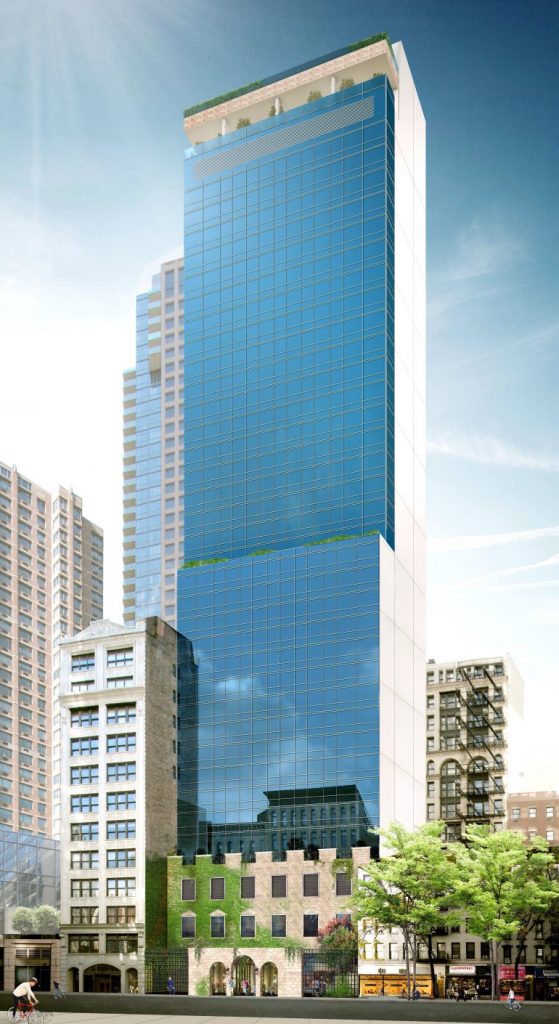
Photo Source: Nobutaka Ashihara Architect

Photo Source: 6sqft.com
See the full article here.
A Cynic’s take on Masterwork’s Awards of MAS
Please do check out the MASterworks Awards site here.
The Municipal Arts Society (MAS) has the idea of recognizing projects that demonstrate ‘excellence in architecture and urban design’, at least according to its own design cheerleading team. The MASterworks Awards have been around since 1988 and recognize structures built or worked on the previous year. Last year’s winners include the restoration of Saint Patrick’s Cathedral and the new Whitney Museum building. The categories for the award are:
- Best New Building
- Best Urban Landscape
- Best Restoration
- Best Adaptive Reuse
- Best New Urban Amenity
- Neighborhood Catalyst
- Best New Infrastructure
MAS allows anyone to nominate their favorite projects completed in 2016. But intriguingly, the awards are chosen by their own jury. Let’s take a closer look. What does this jury like?
Bjarke Ingels, Founding Partner, BIG![]()
- Designed the 2 World Trade Center Building (so I guess we know what he likes, right?)


![]()

Justin Garrett Moore, Executive Director, NYC Public Design Commission
- Worked on the Greenpoint and Williamsburg Waterfront (such as the below Dock 72, Brooklyn) and focuses on urban design with a community-focus. (where is the community focus of Dock 72?)

Charles Platt, FAIA, Consulting Partner, PBDW Architects
- Worked on a number of landmark buildings as the restoration of the Park Avenue Armory (good job!) and the addition to the Saginaw Art Museum.
- Platt is a Director Emeriti at MAS. The tragic addition to the Saginaw Art Museum is shown below.
 Karen Wong, Deputy Director, New Museum
Karen Wong, Deputy Director, New Museum
- Focuses on the combination of arts and technology and supports emerging architects. Here is a photo of the New Museum, widely considered an immiserating influence on the context of its neighborhood. Ms. Wong of course only works there and can’t be charged with designing it.

Young Woo, Founder & Principal Partner, Youngwoo & Associates
- Educated as an architect, Woo now runs a real estate firm.
- Worked on the Chelsea Arts Tower and 200 Eleventh Avenue (The Sky Garage Condominium), with apartment prices up to $20 million. Can’t be expected to like real contextualism in architecture, if the building below is any indication.
- We are extremely curious about Mr. Woo’s work at 139 Center Street, a remarkable building that was supposed to be put into Tribeca East Historic District.
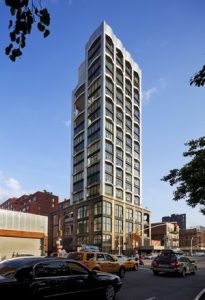
While we are people with experience in the restoration of landmark buildings, most of the panel seems to support super-tall towers, luxury condos, and design concepts that stand out instead of blend in with the city’s architecture (not in a good way). We wish a trained preservationist or a real Jane Jacobs type urbanist were also present on the panel of architects, planners, and real estate developer who seem to share modernism’s aggressive hatred of historical context. We are curious, how was the panel was chosen?
Are Business Improvement District’s Democratic? (no, of course not)
The Times published what appears to be a press release (instead of real journalism) from Big Real Estate again and it’s cheerleaders at the Small Business Services. The article was on BIDs, or Local Business Improvement Districts. BIDs are funded by commercial property owners to make neighborhood improvements such as planting trees, cleaner streets, benches, business marketing, etc. Critics say that the BIDs require a tax that leads to higher rents and allows for the wealthy to have access to better services. Critics also say that BID governance violates the NY State constitution’s clause about there being no property requirement for suffrage.
We suggest that BIDs need to be reformed to reflect one-man, one-vote notions of how BIDS should be governed. There should be no property requirement to serve on a BID governing board. The danger with BIDS is that they are a legal means to hand over public spaces to wealthy commercial property owners, not what democracy is all about.
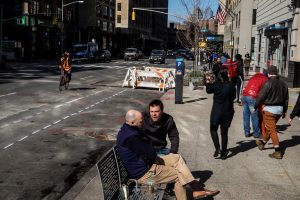
Source: New York Times
Read the New York Times article here.veryone but Brewer and Garodnick and the
Does anyone without a vested interest like the Midtown Rezoning for Dubai Proposal?
Let’s exclude the politicians – they are, after all, dependent on campaign financing from Big Real Estate and they are always so worried about not having ‘a seat at the Big Boy’s table’ to say no to a deal. Let’s exclude City Planning too, as they are in the pocket of Big Real Estate as well. Let’s exclude the Catholic Church as well, as they need to sell St. Patrick’s air rights so that they don’t have to take out loans to pay off abuse victims (see the article about that here.) Does anyone else besides Big Real Estate and the lucky 79 property owners who will get buildable sites out the deal actually like the Midtown Rezoning for Dubai proposal?
Let’s see:
- The Salaried Preservation Groups’s all object to the destruction of a great number of landmark-worthy buildings.
- The City Club has criticized it relentlessly, coming close to calling it illegal and decrying the darkening of the public realm, the spot zoning, and the unfair transfer of public assets to private hands.
- CB 6 Hates it See note below.
- CB 5 Hates it too.
- MAS has criticized the environmental impact statement, coming close to calling it laughable.
In a letter to the City Planning Commission and Gail Brewer, Community Board 6 voiced its objections to the midtown rezoning. In their letter, CB6 discusses a number of issues with rezoning, including allowing for great amounts of FAR to be transferred to low-scale mid-blocks, no analysis on the impacts of FAR, and “not giving due consideration to residents’ reasonable concerns about access to air and light and the quality-of-life problems concomitant with large construction projects”. They also asked for the DCP to provide design guidance for making plazas, covered pedestrian spaces, and other privately owned open spaces.
We applaud CB6 for fighting against rezoning in midtown. CB 5 also issued a resolution against the zoning, very long, very complicated, but can be found here.
Part 3
Gentrification: How Berlin Deals with a Problem We Share
The Times noted that people have been moving into Berlin over the past decade, attracted to the city because of its affordability and culture. This has lead to increase in rent (sometimes up to 80%) while income remains low. Sound familiar? But in Berlin, communities have banded together and formed grass-roots organizations that are fighting these issues. There are a number of policies the city of Berlin has adopte to fight the problems:
- Right of first refusal: this rule lets city officials intervene in selling property if they can find funding for the purchase (however this depends on city funding)
- Rent caps: landlords can’t charge more than 10% over the district average for new rental contracts (there are loopholes though…)
- Milieuschutz Laws: These prevent landlords from doing expensive renovations that price out current tenants. There are 30 of these zones in Berlin and stop rentals turning into condos unless they sell to only current tenants for the first 7 years.
Have these been considered for NYC? Read the full article here. Read the full article here

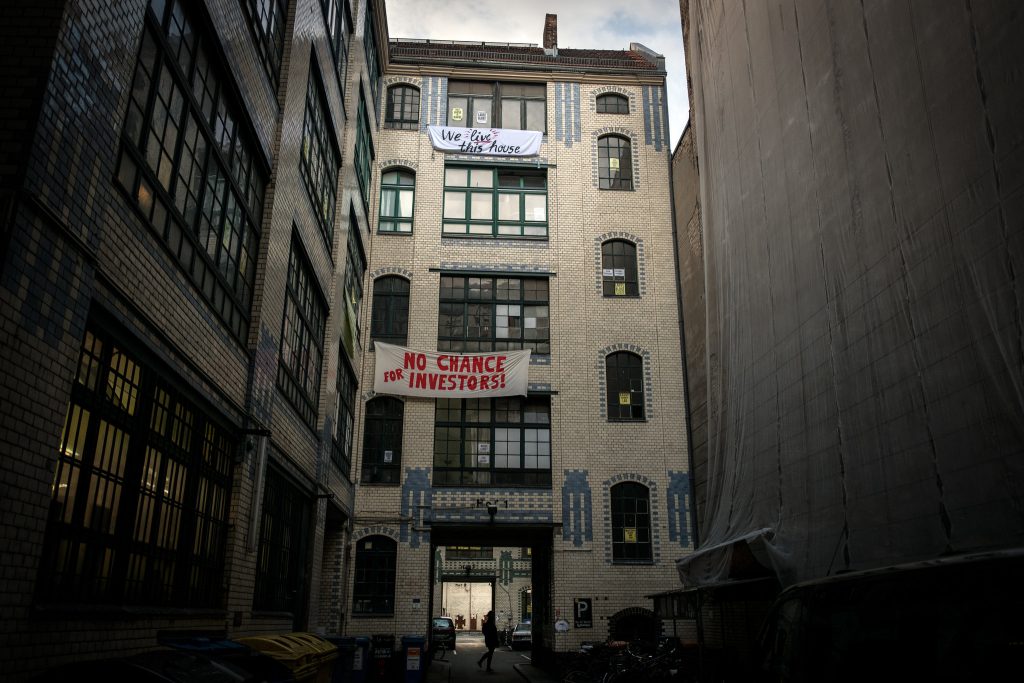 Source: New York Times and Vice
Source: New York Times and Vice
Quote of the Week (and Why Preet Should Run for Office)
Women Activitists and Adaptive Reuse
Greenpoint Hospital closed in 1982 and has been left abandoned for decades. The grass-roots organization, Neighborhood Women, drafted a plan for the site back in 1983, which was ignored. The Women wanted to turn the site into a nursing home with senior housing. However, instead, the city treated the site as a dumping ground and put in over 1,000 beds for homeless men. Now, decades later, the city has plans to build affordable housing at the site.
Women are often the leaders in fighting for communities,”Though most go unrecognized, it is the neighborhood women who lead many of the community fights around the city.” Neighborhood Women protested the BQE in 1972, and although they didn’t stop the demolition of the houses, it helped owners gain an additional $15k per house. They also built day cares and senior care centers and fought for public housing, shelters for abused women, and against racial housing discrimination.
Women activists have always been at the forefront of communities and preservation. It just goes to show that if we work together for fight for what we believe it, we can often succeed. Read the full article here.

Source: New York Times
The London Skyline Then and Now
The Guardian posted a few before and after images of what London’s skyline looked like in 1616 vs. 2016. You can see all the images here. Instead of churches dominating the skyline, 400 years later we now have a Cheese-grater and a Gherkin.


The Mayor’s Weird Call for Contributions
We wanted to bring to your attention an email about de Blasio’s re-election. The email tried to use our hatred of Donald Trump to gain support doe de Blasio. However, he already has $3.5 million in his pile of money for re-election, and much of that comes for Big Real Estate. The email was sent on March 9, right before de Blasio avoided federal and state charges for trading favors for donations during his 2013 election campaign.
